Recent Water Damage Posts
Protecting Your Home: Water Damage Restoration & Prevention in Yavapai County
2/17/2025 (Permalink)
Water damage can strike your home unexpectedly, whether from burst pipes, leaking roofs, or natural disasters. SERVPRO of Yavapai County specializes in water damage restoration, helping homeowners recover quickly and efficiently.
The Dangers of Water Damage
Unchecked water damage can lead to structural issues, mold growth, and expensive repairs. Common causes include heavy rain, plumbing failures, and appliance leaks. Acting fast is crucial to prevent long-term damage.
Expert Water Damage Restoration
Our certified technicians use advanced equipment to remove water, dry affected areas, and restore your property. We respond 24/7 to minimize damage and ensure a seamless restoration process.
How to Prevent Water Damage
- Regularly inspect and maintain plumbing and appliances
- Clean gutters and downspouts to prevent overflow
- Seal windows, doors, and foundation cracks
- Install a sump pump in flood-prone areas
- Monitor water pressure and fix leaks immediately
If water damage affects your home, trust SERVPRO of Yavapai County for fast, professional water damage repair and restoration. Contact us 24/7 for emergency services and let us help restore your home to pre-damage condition!
Call Now: (928) 636-7600
Essential tips to protect your home from water damage
7/30/2024 (Permalink)
Water damage can lead to costly repairs and significant disruption in your daily life. Here are some essential tips to help you protect your home from water damage:
Regularly Inspect Your Roof: Check for missing or damaged shingles, and ensure your roof is properly sealed to prevent leaks.
Clean Gutters and Downspouts: Make sure gutters are clear of debris and downspouts direct water away from your home.
Check for Plumbing Leaks: Inspect pipes and faucets regularly for leaks and fix them promptly to avoid water damage.
Install a Sump Pump: A sump pump can help prevent basement flooding by removing excess water from your home’s foundation.
Maintain Your HVAC System: Ensure your HVAC system is functioning properly to avoid condensation buildup and potential water damage.
By following these tips, you can protect your home from water damage and maintain a safe and dry environment.
Tackling Water Damage in High-Rise Living: Strategies for Condos and Apartments
2/3/2024 (Permalink)
Water damage can be particularly challenging to address in multi-story buildings such as condos and apartments. The vertical nature of these structures introduces unique considerations when it comes to prevention, mitigation, and restoration. In this blog post, we will explore effective strategies for addressing water damage in multi-story buildings to minimize the impact on residents and the property.
Regular Inspections and Maintenance
Implement a proactive approach to water damage prevention by conducting regular inspections of the building's plumbing, roof, and other vulnerable areas. Identifying and addressing potential issues early can help prevent major water damage incidents. Maintain proper drainage systems and address any leaks or plumbing problems promptly.
Communication and Reporting Protocols
Establish clear communication channels between residents, building management, and maintenance staff. Encourage residents to report any signs of water damage promptly, such as leaks, mold growth, or damp spots. Implement a system for residents to submit maintenance requests and ensure timely responses to address potential water-related issues.
Adequate Drainage and Waterproofing
Ensure that the building has adequate drainage systems in place, such as properly functioning gutters, downspouts, and drainage pipes. Regularly clean and maintain these systems to prevent clogs that can lead to water backups and subsequent damage. Consider waterproofing vulnerable areas such as basements or underground parking garages.
Quick Response to Water Incidents
Develop an emergency response plan that outlines the necessary steps and responsibilities in the event of a water damage incident. This includes procedures for shutting off water supply valves, securing affected areas, and contacting professional restoration services. Having a well-coordinated response can help minimize the spread of damage and reduce repair costs.
Thorough Drying and Restoration
In the event of water damage, prioritize proper drying and restoration to prevent mold growth and further structural deterioration. Work with experienced water damage restoration professionals who specialize in multi-story buildings. They will have the expertise and equipment to efficiently extract water, dry affected areas, and conduct necessary repairs.
Consideration for Safety and Disruption
Addressing water damage in multi-story buildings requires consideration for the safety and well-being of residents. Develop plans for temporary accommodation or alternative living arrangements if residents need to be temporarily displaced during restoration. Minimize disruption by communicating any necessary evacuation or relocation details clearly and in a timely manner.
Follow-Up Inspections and Preventive Measures
After restoration, conduct follow-up inspections to ensure the effectiveness of the repairs and check for any residual issues. Implement preventive measures identified during the restoration process, such as installing moisture detectors, upgrading plumbing systems, or reinforcing vulnerable areas to mitigate future water damage risks.
Addressing water damage in condos and apartments requires a comprehensive and proactive approach. By prioritizing regular inspections and maintenance, establishing clear communication and reporting protocols, ensuring adequate drainage and waterproofing, implementing quick response protocols, conducting thorough drying and restoration, and considering safety and disruption, multi-story building residents and management can effectively address water damage incidents and protect the property's integrity.
How to Protect Your Home Against Water Intrusion
10/21/2023 (Permalink)
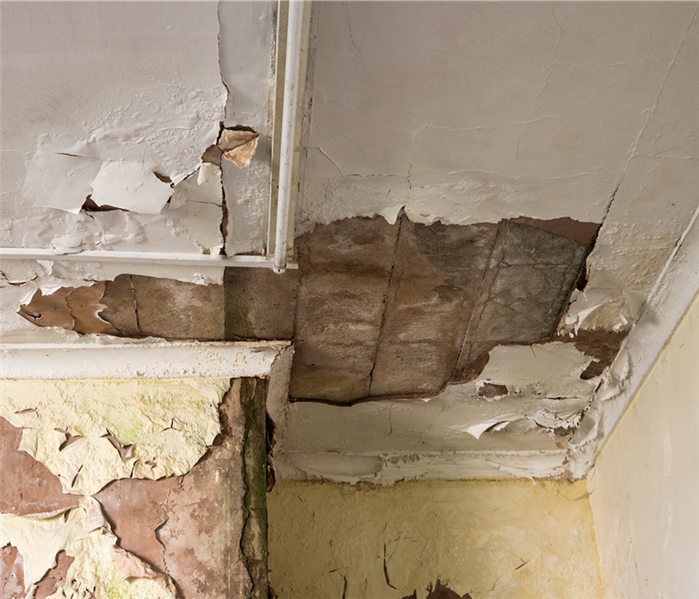 Water intrusion is a serious threat to the structural integrity of your home.
Water intrusion is a serious threat to the structural integrity of your home.
Water intrusion is a serious threat to the structural integrity of your home. From minor issues like leaky faucets to major incidents like floods, water can cause significant damage to your property and lead to expensive repairs. One of the most effective ways to prevent water intrusion is regular exterior maintenance. In this blog post, we will explore some of the crucial steps to safeguard your home against water intrusion.
Inspect Your Roof
Regularly inspect your roof for any signs of damage or wear and tear. Look out for missing or damaged shingles, rusted or corroded flashing, or cracks in the chimney. Any of these issues can lead to water intrusion. Be sure to address any roof damages promptly before they escalate into more severe problems.
Clean Your Gutters and Downspouts
Clogged gutters and downspouts can cause water buildup on your roof, leading to leaks and water intrusion. Clear out any debris from your gutters and downspouts to ensure that water flows away from your home properly. Make sure that downspouts are positioned so that water drains at least three feet away from your property.
Repair Cracks in Your Foundation
Inspect the foundation of your home for any visible cracks. Even minor cracks can allow water to seep into your property, leading to significant damage over time. Use waterproofing sealants to repair any cracks and prevent water intrusion.
Install Proper Drainage Systems
Proper drainage systems around your home can help prevent water intrusion and direct water away from your property. Consider installing French drains, sump pumps, or other drainage systems that move water away from your foundation and lessen the likelihood of water infiltration.
Seal Exterior Openings
Check for any gaps or openings around your windows, doors, and vents. Seal up any exterior openings with caulk or weatherstripping to prevent water intrusion.
Landscaping can also be an important component in preventing water intrusion. Make sure that the grading of your landscaping slopes away from your foundation, directing water away from your home. Trim trees and branches near your home that can rub against your roof or siding and cause damage.
Check for Proper Ventilation
Proper ventilation in your home can help avoid issues such as condensation, which can lead to mold and water damage. Check that vents in your bathroom and kitchen are working correctly and that your attic has enough ventilation to prevent moisture buildup. If you notice any pooling water around your property, take immediate action. Pooling water can cause significant damage over time and increase the likelihood of water intrusion. Use a wet vacuum to remove any standing water around your foundation, and address the cause of the pooling.
Regularly inspect your property, keeping an eye out for any signs of water intrusion. Be vigilant for damp spots, mold, mildew, unusual odors, or staining on ceilings or walls. The sooner you detect a problem, the easier and less costly it will be to address.
Hire Professional Help
By taking the necessary steps to safeguard your property against water intrusion, you can prevent costly water damage and enjoy peace of mind in your home. Regular exterior maintenance can go a long way in avoiding water infiltration, but it's also important to stay vigilant and address any issues promptly. With a little effort and attention, you can protect your home from water intrusion and reduce the risk of damage.
Could a Water Leak Be Costing You Thousands of Dollars?
7/28/2023 (Permalink)
Water leaks are not only inconvenient but can also result in significant financial losses if left unnoticed or unaddressed. Even a minor leak can lead to wasted water, increased utility bills, property damage, and costly repairs. In this blog, we will explore the potential financial implications of a water leak and highlight the importance of early detection and prompt action to save you thousands of dollars in the long run.
Escalating Water Bills
One of the initial signs of a hidden water leak is a sudden increase in your water bills. Even a small, unnoticed leak can waste a substantial amount of water over time, leading to inflated monthly bills. Monitoring your water usage and comparing your bills month to month can help identify any abnormal spikes that may indicate a leak.
Structural Damage
Water leaks, if left untreated, can cause significant damage to your property's structure. Water seeping into walls, floors, or ceilings can weaken the integrity of building materials, leading to rot, mold growth, and even structural collapse. Repairing and restoring the structural damage can be a costly endeavor, often requiring extensive renovations.
Mold Remediation
Prolonged exposure to moisture from a water leak can create an ideal environment for mold growth. Mold can spread rapidly, causing damage to surfaces, compromising indoor air quality, and posing health risks to occupants. Professional mold remediation can be expensive, and it's crucial to address the underlying leak to prevent future mold problems.
Damage to Belongings
Water leaks can damage personal belongings, furniture, electronics, and valuable items. Carpets, rugs, upholstery, and wooden furniture are particularly susceptible to water damage, often requiring specialized cleaning or replacement. The cost of repairing or replacing these items can add up quickly.
Increased Utility Costs
Aside from higher water bills, a water leak can also lead to increased energy costs. If the leak affects hot water pipes or the water heater, it can cause the system to work harder to maintain the desired temperature. This results in increased energy consumption and higher gas or electricity bills.
Wasted Water Resources
Water is a precious resource, and a leak means wasting gallons of water every day. Conserving water is not only environmentally responsible but also helps reduce your water usage and associated costs. Repairing leaks promptly ensures that you are not contributing to water scarcity issues and supports sustainable water management.
Emergency Repairs
If a water leak goes unnoticed or unaddressed for an extended period, it can worsen and lead to sudden and costly emergency repairs. Burst pipes or extensive water damage may require immediate attention from professionals, who often charge higher rates for urgent services. By promptly addressing leaks, you can avoid these emergency situations.
Insurance Deductibles and Premiums
If water damage from a leak is covered by your insurance policy, you may still be responsible for paying deductibles. Frequent claims and water damage incidents can also result in higher insurance premiums over time. Preventing leaks and addressing them promptly can help maintain a favorable claims history and potentially lower your insurance costs.
A water leak, no matter how small, can have significant financial implications if left unattended. From increased water bills and structural damage to mold remediation and costly repairs, the cumulative costs of a water leak can quickly add up to thousands of dollars. Regularly inspecting your plumbing system, promptly fixing leaks, and investing in leak detection technology can save you money in the long run. Remember, the key is early detection, proactive maintenance, and swift action to minimize the financial impact of water leaks and protect your property.
Does your building have any of these common sewage problems?
3/7/2023 (Permalink)
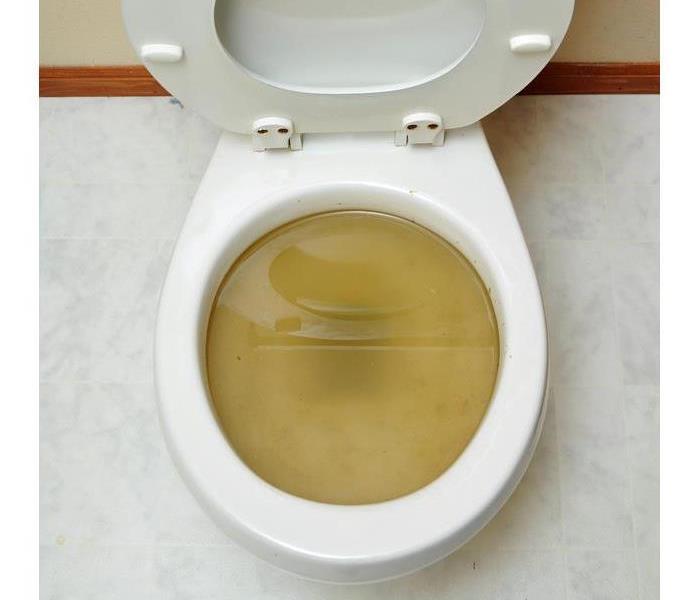 When your toilet backs up, sewer issues can arise, give SERVPRO a call today!
When your toilet backs up, sewer issues can arise, give SERVPRO a call today!
Sewage backups, broken pipes, and other sewer problems can happen to anyone. Homeowners and businesses alike are susceptible to these issues, but you can prevent them by taking action. If you suspect that your building has any of these common sewage problems, call in a professional plumber right away or risk having the situation get worse or more expensive.
Sewage backup
Backup is when sewage that normally goes into the sewer system gets pushed back up through your drains and out into your home. This can be caused by a variety of issues, including blockages in pipes or cracks in the foundation of your building. It's important to get these problems fixed before they lead to backups, not only because they're gross and unpleasant, but also because sewer backups can cause serious damage to your home or building if left untreated.
Cracked or broken pipes
If you notice any of the following signs, it's likely that your pipes are broken:
- Water leaking from the ceiling or walls
- A foul smell coming from one or more drains in your building
If you think your pipes might be broken, take action immediately. Call a professional plumber as soon as possible to have them repaired. If left unrepaired, this problem could lead to bigger issues such as mold growth and structural damage over time.
Leaking joints
If you notice that your building has any of these common sewage problems, contact a professional to help you identify and repair the damage.
The joints between pipes are very important because they connect two pieces of pipe together and allow for fluid flow. If there's any kind of leak in this area, it can cause a lot of damage to your home or business as well as contaminate nearby water sources. There are several reasons why joints might leak, corrosion from old age or acidic materials like bleach, pressure differences caused by changes in elevation and wear from repeated use over time.
Joints may be made out of either metal or plastic depending on what type was installed when construction began and both types can break down over time due to corrosion or wear-and-tear which leads us back around again.
Worn-out p-traps and floor drains
A p-trap is a plumbing fixture that connects the water inlet of your toilet to the waste line. It's designed to prevent sewer gas from coming up through the toilet and into your bathroom or kitchen.
In many older buildings, these traps have been worn out over time by repeated use and may need to be replaced. If you notice odors coming from your drains or toilets, or if they won't flush properly this could be a sign.
Pipes are often made of cast iron or lead, which can corrode over time due to exposure to chlorine from tap water and other chemicals. If these pipes become corroded enough that there's no longer any protection between them and groundwater below ground level, which contains high levels of bacteria. Sewage could leak into homes through cracks in foundations' basements where these aging pipes enter houses' basements.
Clogged traps and vents
A trap is a U-shaped pipe that prevents sewer gases from escaping into your building. It's located at the lowest point of your plumbing system, and it connects to your drainpipe.
A vent serves two purposes:, it allows air to enter and exit your pipes so that wastewater does not back up into them, and it lets you know whether or not there's a blockage in there by making noises when something goes wrong. If you hear bubbling sounds coming from one of these vents or if none of them are working, then your traps may have clogged up with roots or other debris, which means they need some attention before they start causing problems for you down the road.
If you have any of these problems, call a professional to help repair them before they get worse. SERVPRO has professionals trained with the expertise and experience to restore your property back to pre water conditions after a sewer backup.
How Long Does the Water Damage Restoration Process Take?
2/6/2023 (Permalink)
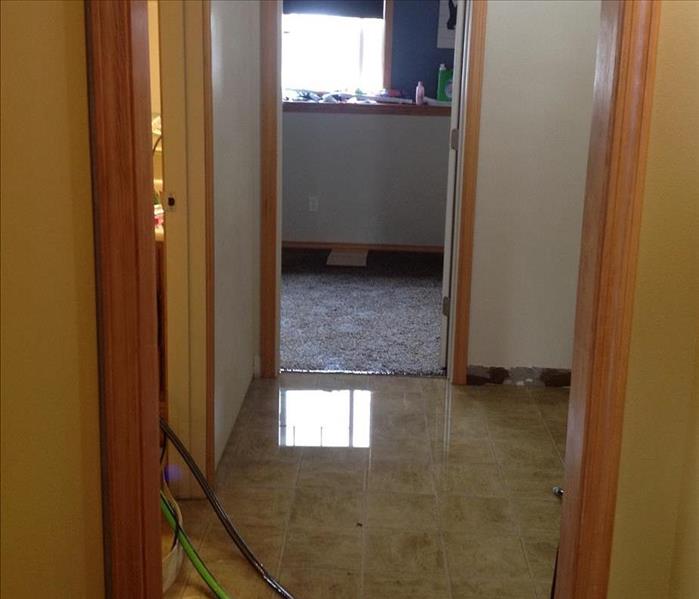 Experiencing a water loss on your property is hard enough. Not knowing when everything will be back to normal can cause even more stress.
Experiencing a water loss on your property is hard enough. Not knowing when everything will be back to normal can cause even more stress.
Experiencing a water loss on your property is hard enough. Not knowing when everything will be back to normal can cause even more stress. You want to get the cleanup process started quickly, but you also don't want to rush into anything that could cause more problems down the road. Unfortunately, there's no way to tell exactly how long it will take for everything to be fixed -- that depends on many factors. That said, here are some things we can all agree on:
It's Impossible to Give an Exact Timeline
The length of time it takes to complete a restoration project is always going to be dependent on the extent of the damage. In some cases, the majority of water removal and drying can take place within 24 hours, while other areas may require weeks before they’re ready for repair work.
The longer it takes a home or business to dry out after a water loss event, the more extensive damage there will likely be as well. The same goes for how long repairs take; if there are multiple damaged areas in close proximity, they could all need repairing at once so that you don’t have any issues with mold growing during this process.
Things to Consider
As you begin the water damage repair process, consider the following questions:
- How much water leaked into your home? The more water that's been leaked, the longer it will take to clean up.
- How long has the water sat there before the cleanup process began? If the water has been sitting for an extended period of time, there could be secondary damages present on your property. Secondary damages, such as a mold infestation, will take longer to repair.
- What category of damage is present? The category of water damage refers to the level of contamination the water present has. The more contaminated the water is, the longer the repair time.
How Quickly You Start the Cleanup Process Matters
The sooner you begin the clean-up process, the better. The longer you wait to start, the more damage will occur and the more expensive it will be to clean up. We recommend starting as soon as possible after a flood or leak happens because mold can grow within 24 hours of a water disaster. It's important to call in professionals right away so that they can begin working on your recovery before additional damage occurs and before mold takes hold.
The More Damage Present, The Longer Repairs Will Take
The extent of the damage will determine how long it takes to restore your home. For example, if there is extensive damage throughout your home, a water restoration project may take longer than a project that involves only one room.
In the end, it's impossible to give an exact timeline for how long the clean-up process will take. If you're having a hard time solving your water damage problem on your own and are looking for a water cleanup expert in Prescott, AZ, our SERVPRO of Yavapai County team is here to help!
How does Sewage Damage Work?
11/2/2022 (Permalink)
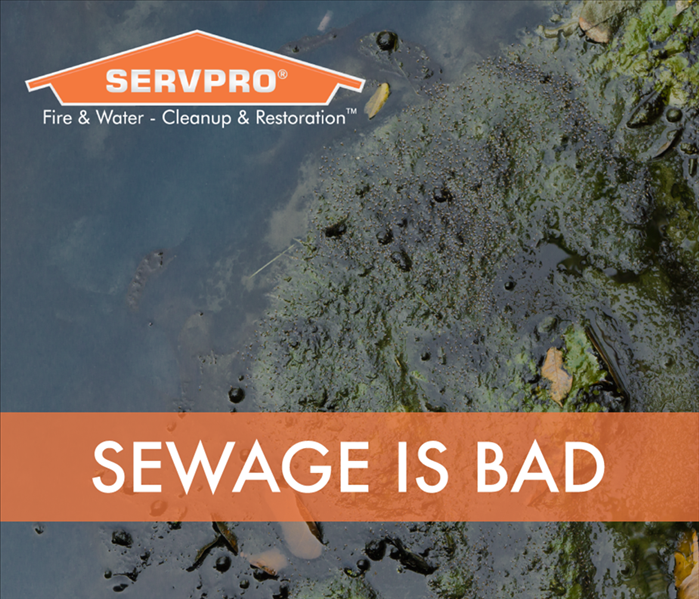 Sewage damage is caused by a backup of sewer water.
Sewage damage is caused by a backup of sewer water.
How does Sewage Damage Work?
When you are dealing with sewage damage in your Prescott, AZ home, you want to make sure that the job is done right. That's why we have highly trained technicians who will assess the damage and determine whether you need to call your insurance company. We will remove any damaged materials and contents that are non-salvageable while our crew is drying out the area. We use fans and dehumidifiers to completely dry out the affected area as quickly as possible so that mold won't grow.
What is Sewage Damage?
Sewage damage is caused by a backup of sewer water. This can be caused by several things. One of the most common causes is tree roots that have built up over time and are clogging up your sewer line. Other materials such as grease or food particles can also cause blockages in your pipes, causing sewage damage to your home.
Where does it come from?
Sewage damage can occur in your home, basement, or garage. When you have a sewage backup, it's called sewer backup. Sewer backups happen when water enters your pipes and mixes with the waste that is waiting for the sewer service to collect it.
When this happens, the water will push all the waste up through your pipes until it comes out onto your flooring or even into walls/ceilings.
The possible causes of sewage backups include:
- A broken pipe allows water to fill up these areas of your home.
- A storm or heavy rainstorm causes an overflow.
How do you clean it up?
To begin the cleanup of your flooded home, you will need:
- Remove all damaged materials. For example, if drywall or insulation is stained by sewage water, remove it, and dispose of it properly.
- Remove non-salvageable items such as carpeting/flooring and cabinets in order to give yourself more space for clearing out excess moisture from your home's structure.
First, our highly trained technicians will assess the damage.
Our technicians will:
- Check the area for any additional damage.
- Check for signs of mold and mildew.
- Check for signs of water damage, including standing water, pools, or puddles of water.
- If there is evidence of sewage backup, we'll recommend that you contact a plumber to fix your plumbing system before we proceed with cleanup services.
Then we will determine whether you need to call your insurance company.
If you have insurance, it is best that you call your agent and let them know what has happened so they can help with the claim process. If you don't have a policy, we can help find one that fits your needs and budget.
If there was sewage damage in your home because of someone else’s negligence or carelessness, then the person responsible should pay for any damages caused by their negligence.
While our crew is drying out the area, you should turn off the power to the room.
- While our crew is drying out the area, you should turn off power to the room.
- Turn off power at the circuit breaker or fuse box, not just at a single switch.
- Do not use the room until it is completely dry.
We will shut off the water valve to prevent sewage backup.
The first thing we will do is shut off the water valve to prevent sewage backup. We can then shut off power to affected area. After that, we'll remove all contents from affected area and clean up any sewage backup before using fans and dehumidifiers to dry out the wet area.
We will remove any damaged materials and contents that are non-salvageable.
Our technicians will carefully remove all items from the affected area, including carpets and pads if necessary.
Our crew will use fans and dehumidifiers to completely dry out the affected area.
The fan will be used to circulate the air and help dry out the carpet faster. In addition, we will place a dehumidifier inside your home to remove excess moisture from the air. This prevents mold growth and mildew growth that can occur when there is excessive moisture in your home.
By using fans to circulate air throughout your home and dehumidifiers to remove excess moisture from it, we can prevent bacteria growth, mildew growth, or other types of unhealthy conditions that may occur if left untreated after sewage damage has occurred.
SERVPRO of Yavapai County is here to help you with any sewage damage, so feel free to give us a call at any time. Our team can be reached 24/7 by phone or e-mail.
3 Reasons Why Filing an Insurance Claim Can Raise Your Premium Rate
5/27/2022 (Permalink)
 If you are not cautious, filing a home insurance claim can have an impact on your premium rates.
If you are not cautious, filing a home insurance claim can have an impact on your premium rates.
Three Reasons Why Filing An Insurance Claim May Increase Your Premium Rate
Homeowners in Bagdad, AZ, are searching for ways to keep their home insurance from reaching unreasonable premium rates. Filing a claim, regardless of fault, can make an impact on your rates. Claims for emergency repairs can drastically hike up your premium prices, which may include:
- Water damage repair from a home flood
- Fire damage repair from a dryer fire
- Mold remediation for homes in humid climates
Here are three reasons filing an insurance claim can change your premium rate.
1. Your Claim Was Ratable
Some insurance companies categorize between non-ratable and ratable claim events. A non-ratable claim includes events that are not preventable, such as roof leakage from wind damage in the event of inclement weather. Ratable claims include events that are preventable, such as liability, medical, and fire damage claims due to dirty vents in heating, ventilation, and air conditioning systems.
2. You Filed Multiple Claims in a Short Period of Time
An insurance company will likely not hike up your premium for one claim. In the case of multiple claims, insurance companies may remove discounts, such as claim-free discounts, and charge an additional premium. The amount of this increase will range depending on your insurance company.
3. You Did Not Provide the Proper Documentation for Your Insurance Claim
After your insurance company processes your claim, they will want proper documentation on file to prove the contractor completed repairs in a reasonable period of time. If you do not provide this documentation, your insurance company may send a notice of non-renewal. If you receive this notice, you will need to search for another company once your coverage has ended.
Filing a home insurance claim can affect your premium rates if you are not cautious. If you are processing a non-ratable claim for damage from inclement weather, it is important to hire a trusted storm cleanup company that will complete repairs in a timely manner. If you can no longer afford your premium, you can always search for other insurance companies that will meet your home insurance needs.
Inspecting and Fixing Leaking Faucets
5/4/2022 (Permalink)
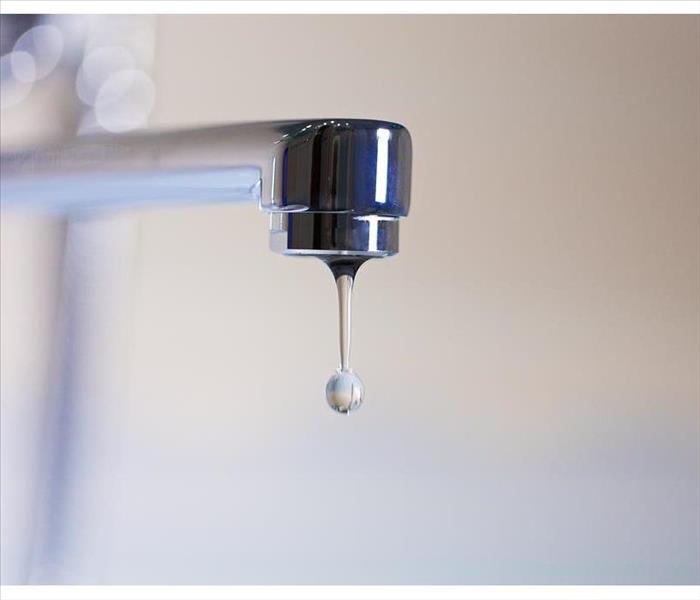 Leaks can cause water waste, skyrocketing water bills, structural damage, and mold and rot.
Leaks can cause water waste, skyrocketing water bills, structural damage, and mold and rot.
Inspecting And Repairing Leaky Faucets
A leaking faucet may seem insignificant at first but can quickly become a problem if not addressed immediately. Leaks can lead to water waste, skyrocketing water bills, structural damage, and mold and rot. Fortunately, you can locate and fix most leaking faucets without calling a plumber. With major leaks, however, you need to contact a water damage restoration company in Prescott, AZ, to assess the level of damage the leak might have caused.
What Tools You Will Need When Fixing a Dripping Faucet
The fix for a leak depends on the faucet type, but you will almost always need a screwdriver, an Allen wrench, pliers, new O-rings, and a repair kit:
- Before repairing a leaking faucet, turn off the water supply.
- Turn on the tap to release any remaining water and plug the drain.
How To Inspect the Different Types of Faucets for Damage
Consider the different types of faucets that may be found in your home and the steps you can take to inspect them for leaks.
1. Ball-Type Faucet
Ball-type faucets are commonly found in kitchen sinks. Unlike other faucet types, they use a ball joint to regulate the water flow and don’t usually have washers. If you have a leaky ball-type faucet, you need to remove the cap to check the ball joint, inlet seal, and springs for signs of wear or damage and replace them as needed.
2. Cartridge Faucet
Cartridge faucets are found in bathroom fixtures and use a cartridge to control water flow. If you have a leaky cartridge faucet, check its O-ring or neoprene seal, aside from the cartridge itself. If you have to replace the cartridge, make sure to purchase the right type for your faucet.
3. Ceramic-disk Faucet
Disk faucets have disk cylinders and neoprene seals. If you have these faucets, remove the cylinder to inspect the seals. You can try cleaning the cylinder and seals before reinstalling them.
After any repair, turn on the water supply to check whether the faucet still leaks.
A fixed leak will give you peace of mind and save you time and money. These tips will equip you to take on a leaking faucet even without plumbers.
The 3 Best Methods To Identify a Leaky Toilet
3/1/2022 (Permalink)
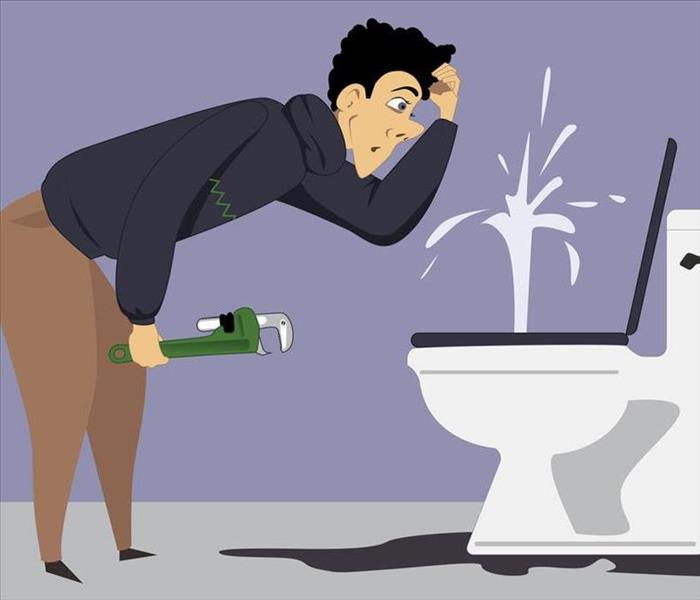 When your home requires water damage repair and restoration, our crew is here to help! We're standing by 24/7 to respond to your emergency
When your home requires water damage repair and restoration, our crew is here to help! We're standing by 24/7 to respond to your emergency
The 3 Most Effective Ways To Find A Leaky Toilet
While some problem areas around your Bagdad, AZ, home often make themselves known in a very obvious way, some can go silently undetected for long periods of time. One of these problems can come in the form of a leaking toilet, which can cause both water leaks on your bathroom floor and an expensive utility bill, to boot. If you think your home may be experiencing a leaky toilet, here are the three best methods for detecting a problem and solving it before the consequences become any worse.
1. Test the toilet water tank using food coloring.
While it might seem strange, using food dye as a method for seeking out leaks is quite effective. Start with the toilet you’re concerned about and flush it normally. Wait through its entire cycle, then add 4-5 drops of red or blue food coloring to the tank’s water and wait 20-30 minutes. Once the time has passed, return to the toilet and check the bowl for changes in color. If the water is clear, there’s no sign of a leak. However, if the water is slightly discolored by the dye, you’ve found your leaking toilet.
2. Check for problems with the float.
While there’s an overflow pipe installed in every toilet tank to prevent just that situation, there can sometimes be overflow anyway due to a faulty float. Since the float is supposed to tell the inlet valve when to shut off the water, any extra water can indicate a possible leak, meaning you might need a new float.
3. Consider that the wax ring might be dry or installed incorrectly.
Wax rings on toilets dry out all the time, making them an easy suspect when you come across a bathroom leak. Inspect yours thoroughly to see if this is the source of your water issue.
If you find yourself needing more assistance with identifying a leaking toilet in your Bagdad, AZ , home, contacting professional water restoration experts who are here to help is the easiest way to ensure your water problem is solved.
Important Steps To Take If Water Drips From Light Fixtures
2/7/2022 (Permalink)
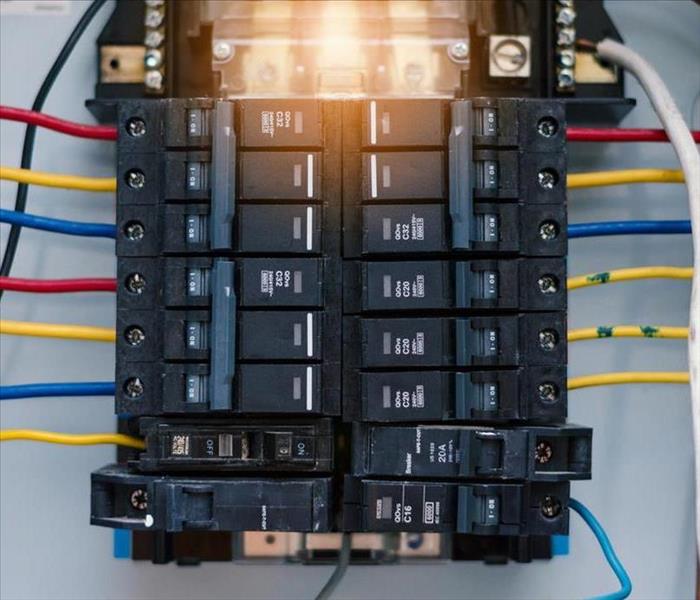 If you notice water dripping from your ceiling or light fixture, don’t simply turn off the light. You definitely shouldn’t touch the fixture either.
If you notice water dripping from your ceiling or light fixture, don’t simply turn off the light. You definitely shouldn’t touch the fixture either.
If Water Drips From Light Fixtures, Take These Important Steps
There are certain places in your Prescott Valley, AZ, home where you expect to find water, and there are places that will alarm you if water is there. For instance, if you walk into a room and see water dripping from your light fixtures, you know you have a big problem on your hands. Water in a light isn’t a situation you want to take lightly or ignore. With some quick action, you can resolve the ordeal and reduce the risk of widespread flooding.
What To Do First
Water in a light is a dangerous situation, as you know water and electricity aren’t a good combination. For the safety of everyone in your home, make sure you respond to this issue quickly and properly.
• Shut off the power in your home at your breaker box.
• Test to ensure the electricity is off.
• Contact a plumber.
• Contact an electrician.
Turn Off the Power
If you notice water dripping from your ceiling or light fixture, don’t simply turn off the light. You definitely shouldn’t touch the fixture either. Instead, locate the main breaker box in your home and turn off the power to the affected area. In fact, it may be safe to turn off all power to your house. Doing this will eliminate the risk of shock or even electrocution.
Test It Out
To be safe, even after you have shut off the power, make sure there is no electricity flowing through wires and fixtures in your home. With a voltage meter, check whether you detect any current in a dry wire in the home.
Call the Pros
It’s important that you contact the right professionals to help correct this potentially devastating situation. A restoration expert can handle ceiling damage, while a plumber will know how to eliminate the water issue. Also, a trusted electrician will help you install new fixtures without worrying about the risk of shock.
No one wants to see water in a light, but there are fortunately strategies you can follow to help ensure your safety. Act fast and get the right people on the job, and you should be in good shape.
How To Recover From Water Damage
1/12/2022 (Permalink)
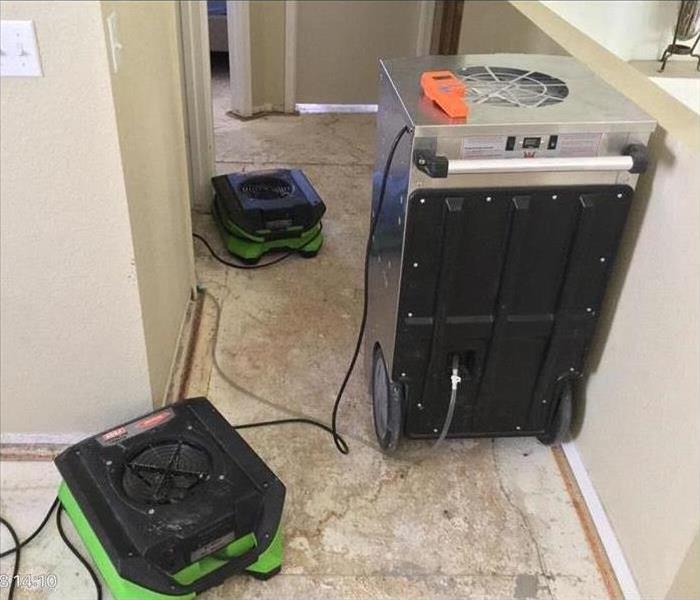 If you have water damage in your home, call SERVPRO. Our team has the right equipment for the job. Give us a call for your water damage, 24/7.
If you have water damage in your home, call SERVPRO. Our team has the right equipment for the job. Give us a call for your water damage, 24/7.
How Do I Get Rid Of Water Damage?
If your Prescott Valley, AZ, home has suffered water damage, you may be wondering what steps you need to take to recover. Fortunately, there are a number of things you can do to get your home and personal items restored to their previous condition. Here’s what you may want to know.
1. Removing the Water
The first step in water cleanup, whether the water came from broken pipes or storm flooding, is to dry out the damaged area as thoroughly as possible. This can prevent problems, such as mold growth or rotting, and allow repairs to be completed in a smoother fashion. Some recommended tools for this step include a pump or water-rated shop vacuum and a dehumidifier.
2. Restoring the Building
When dealing with structural water damage, you may want to work with a professional restoration service. Not only can they perform the cleanup for you, but these professionals should also know the best course of action for each damage type. Your home should also be boarded over while repairs are underway in order to help prevent further problems caused by the weather.
3. Restoring Personal Items
If you have personal items that were damaged by the flooding, then you may be relieved to know that many of these can be saved. A professional can restore electronic or paper documentation, while there are many steps you can take for other items on your own. Clothing and rugs can be washed in hot water, while solid items, such as furniture, can be wiped down. In the case of extreme damage, you may still want to replace some items.
The first step to recovering from water damage is to thoroughly dry out the area. Once everything is dry, you can begin any sanitation steps needed and formulate a plan for repairs. Remember, you will also need to clean your personal items. If you have any questions or need help with these steps, a professional restoration team may be able to help.



 24/7 Emergency Service
24/7 Emergency Service







